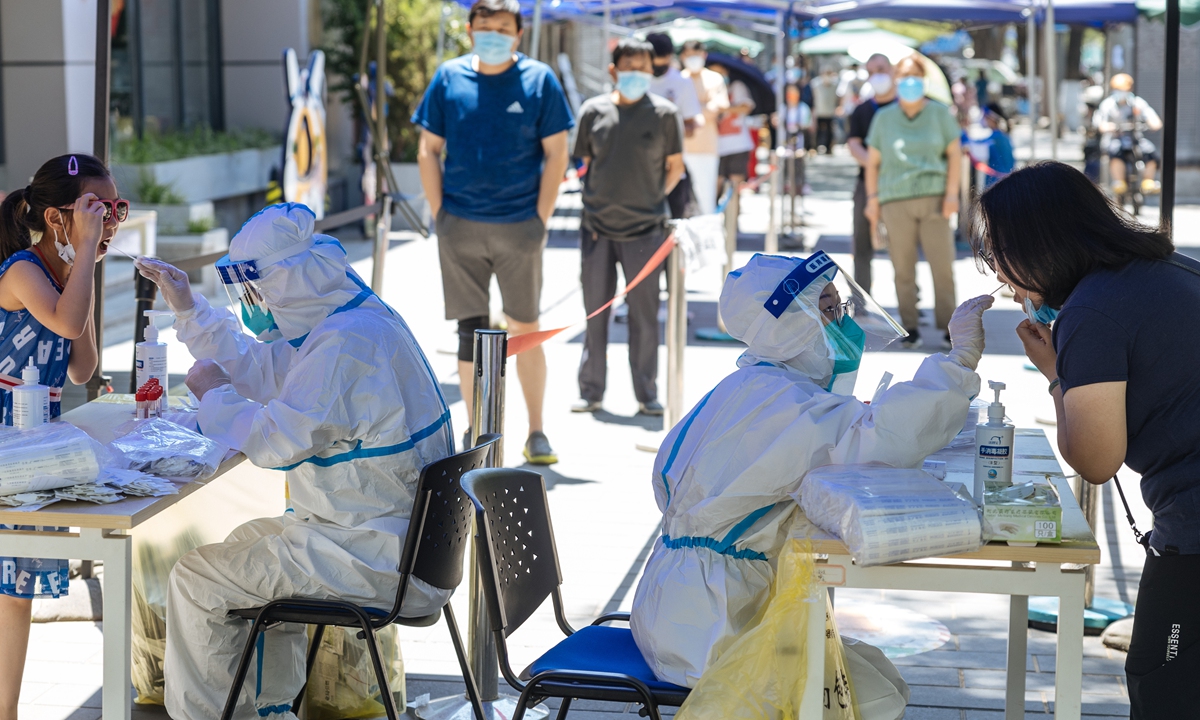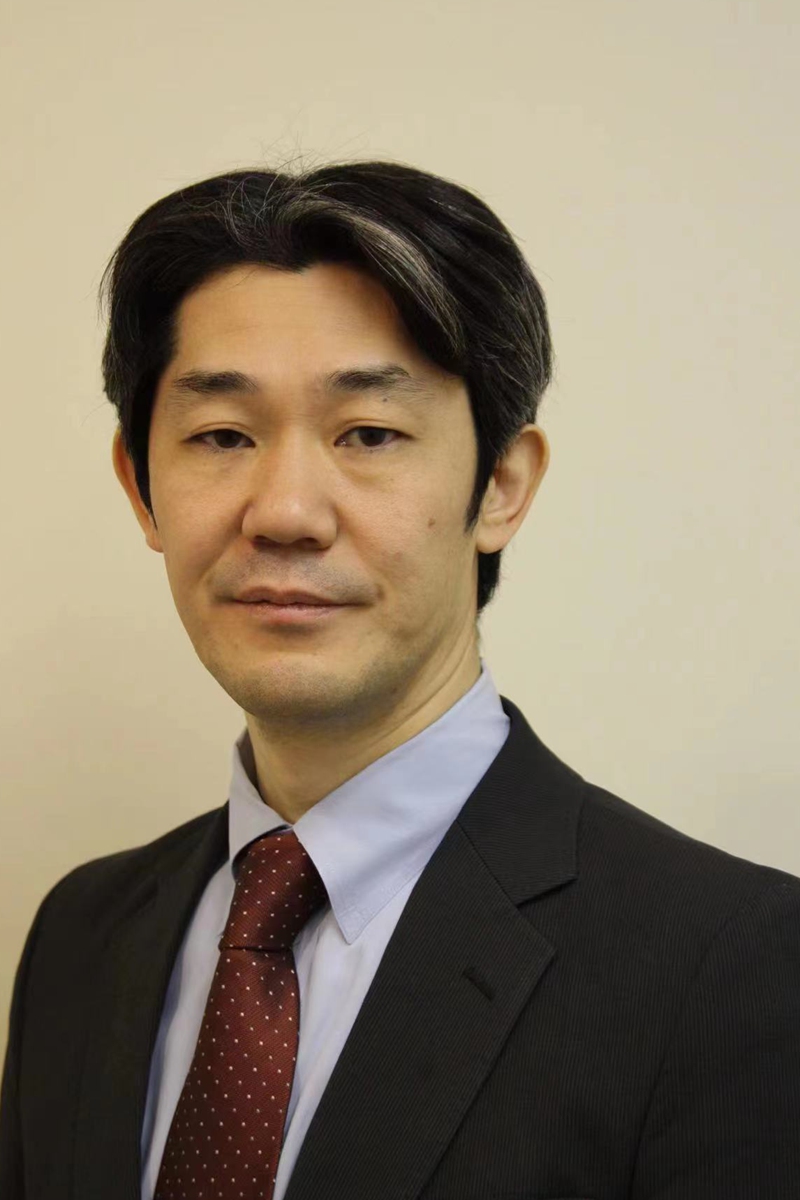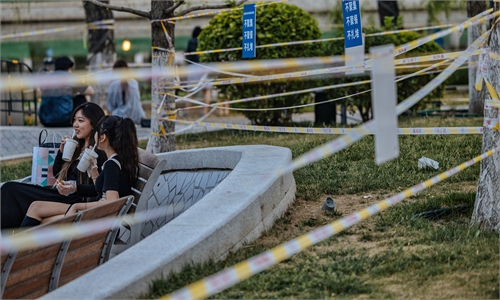IN-DEPTH / IN-DEPTH
China’s dynamic zero-COVID policy creates a strong fortress for world against virus: Japanese professor
Tailor-made response

Residents line up for a nucleic acid test on May 30 in Beijing. Photo: Li Hao/GT
Editor's Note:
China's big metropolises including Beijing and Shanghai are returning to a normal pace of life and production and the epidemic is also well controlled in other places around China, which has shown the effectiveness of China's dynamic zero-COVID policy. However, for some time, certain countries have consistently smeared and bad-mouthed the dynamic zero-COVID policy. Tomisaka Satoshi (Tomisaka), a Professor at the Institute of World Studies at Takushoku University penned an article, stressing that the dynamic zero-COVID policy is, so far, the only choice for China when the toxicity of the Omicron variant has not been significantly weakened. The Global Times reporter Xing Xiaojing (GT) talked with Tomisaka in an exclusive interview on the choices of anti-pandemic measures.

Tomisaka Satoshi, a Professor at the Institute of World Studies at Takushoku University Photo: Courtesy of Tomisaka
GT: Beijing, Shanghai and other places across China are gradually returning to normal production and pace of life, which once again proves the efficiency of China's dynamic zero-COVID approach. In this context, why do you think it is necessary for China to insist on the dynamic zero-COVID policy?
Tomisaka: I think it is necessary to stick to the dynamic zero-COVID policy until we fully understand whether the novel coronavirus disease can be completely ignored. The necessity of adhering to the dynamic zero-COVID policy is based on the comprehensive consideration of China's medical system and the reality of China's national condition.
Given China's large population and a shortage of medical resources, the spread of the novel coronavirus disease could cause a serious chain reaction. There are some gaps in China's healthcare system. The collapse of the rural healthcare system will inevitably lead to the collapse of the urban health system, which could lead to a vicious cycle. That is, in rural areas where the epidemic spreads, there is an increased risk that a new mutant strain emerges, which will ultimately spread to cities. While cities will try every means necessary to contain it, it's still highly possible for a new mutant strain to emerge in the countryside. This will possibly happen over and over again. In addition, we must also consider how to maximize the protection of the elderly, children, and other vulnerable groups.
In short, if China cannot "prevent" the novel coronavirus disease in the defensive stages, the subsequent huge pressure will be transferred to dealing with its spread. Before the danger of the virus infection is completely determined, China's dynamic zero-COVID approach is a very necessary measure, and it is also the most suitable way for China to proceed. Moreover, from the perspective of preventing the emergence of new mutant strains, China's dynamic zero-COVID policy has gone beyond the domestic epidemic prevention and control, but has also played the role of building a strong fortress for the world against the virus.

Residents and couriers entering a compound scan a health code on May 30 in Beijing. Photo: Li Hao/GT
GT: In Japan and the West, some people questioned and criticized China's dynamic zero-COVID policy. What's your take on it?
Tomisaka: The dynamic zero-COVID policy does not mean "zero infection," as some Japanese and Western media outlets have equated the two. It is regrettable that they are so quick to criticize and question the dynamic zero-COVID policy without even properly understanding what it is.
his phenomenon is not simply a misunderstanding or misrepresentation. I think it can be roughly divided into two reasons. First, from the very beginning, they held a negative attitude toward China's anti-epidemic measures and were unwilling to admit that China's anti-epidemic policy was effective, insisting that the dynamic zero-COVID policy had problems and flaws. Second, judging from the figures, they believe that China is "over-quarantined." The number of new cases in China is relatively small by the standards of Japan and Western countries, so they question whether China's dynamic zero-COVID policy is too much and whether the sacrifice in the economic terms is too great.
Japan and the Western community cannot understand China's shortage of medical resources, ignoring the rationality of prevention and control measures. At the same time, the economic recovery cannot immediately yield obvious results and this is a reason for their criticism and skepticism.
GT: Can the global response to the COVID-19 be roughly divided into "coexistence" and "zeroing"? Do the two have to be contradictory?
Tomisaka: It can be divided in this way. "Coexistence" is a loose response method that lasts for a long time; "zeroing" is a vigorous way to control the epidemic in a short period of time. In my opinion, "coexistence" and "zeroing" are neither right nor wrong, but rather whether they are suitable or not. It is up to each country to decide on its own based on actual national conditions.
Take Japan as an example. It is very difficult to adopt the dynamic zero-COVID policy in Japan as the administrative procedures are too cumbersome, and it is difficult to recruit volunteers.
Japan also has no idea how to implement lockdown and can only choose "coexistence." Since choosing "coexistence," it can be felt that the Japanese people's tolerance for the novel coronavirus disease has increased, and the Japanese government does not seem to be prepared to take other anti-epidemic measures. The current daily number of confirmed cases of COVID-19 in Japan remains thousands, which is not a problem in Japan, but there are also predictions that Japan may see a potential new wave in autumn.
I don't think Japan has any reason to criticize China's dynamic zero-COVID policy. It is up to each country to make a choice between "coexistence" and "zeroing" based on its own national conditions. The dynamic zero-COVID policy is certainly not perfect, and the difficulties of detecting asymptomatic infections early can make it seem passive at times. But that is because the characteristics of the Omicron strain itself, therefore it cannot be regarded as simply a policy issue. As far as the current situation is concerned, until the novel coronavirus disease has been comprehensively studied, the dynamic zero-COVID policy is China's only option, and there is no more effective method.
GT: Lockdown and control measures under the "dynamic zero-COVID" policy would affect the economy to a certain extent. Certain people in Japan and some Western countries have been hyping "China economic collapse theory." What do you think of this?
Tomisaka: I don't know why they came to such an extreme conclusion. It is difficult to assess the economic impact of the current round of the epidemic. It is not appropriate to try to draw a conclusion now.
China's economic foundation is very solid. During the outbreak in 2020, China was also the only major country to achieve positive economic growth. The "dynamic zero-COVID" policy "sacrificed" the May Day golden week holiday, which will be reflected in May's economic data. At present, the epidemic situation in various parts of China has been basically contained, and this part of the loss is expected to be recovered during the summer and long National Day holidays in October, and people's enthusiasm to travel may be even higher.
The lockdown and control measures are bound to affect the economy, but views such as China's economic "collapse" and the country "falling into the abyss" are doubtful. There is a lot of talk about the decline of China's real estate industry. In fact, long before the epidemic, China realized the limitations of an economy that relies on the real estate market, and tried to get rid of an economic model that relies too heavily on it. China has long been intending to adjust several industries including real estate, but the pace of adjustment has slowed down due to the epidemic, which has led to unnecessary concerns from the outside world.
China's economic structure and foundation have not changed due to the epidemic, especially in terms of trade. China plays a pivotal role in the world and should be back on track soon. Returning to strong levels of consumer expenditure may take some time - not just in China, but also around the world as it faces this problem. After this epidemic, whether consumers will return to a pre-pandemic level of spending is still too early to draw conclusions.
As the growth engine of the world economy, China's dominant position in the global economy is relatively outstanding. Especially in the context of the conflict between Russia and Ukraine, the world has placed higher expectations on a stable China.
We should pay more attention to the trajectory of China's economy in the "post-epidemic era" - its technological power. According to data released by the National Bureau of Statistics of China, investment in high-tech manufacturing increased by 32.7 percent in the first quarter, and the high-value-added high-tech and digital fields continued to grow steadily despite the headwinds of the epidemic.
The impact of the lockdown and control measures is only temporary, and China's economy can be back on track. Moreover, China's policies such as providing subsidies for small, medium, and micro enterprises and encouraging the cultivation of scientific and technological talent can also fundamentally support the development of China's economy, which will have impacts in the future.
GT: How can a balance between "dynamic zero-COVID" policy and "boosting the economy" be achieved?
Tomisaka: From the experiences gained from Wuhan and Shanghai, even if China is locked down, a return to normal daily life can be guaranteed.
During the lockdown, people are often eager to know when they could return to a normal pace of daily life. If the consensus is reached regarding the duration, both production and life can be rescheduled within a certain time frame.
For example, if it can be predicted that there may be two months in a year during which the pace of production and life will slow down, early assessment and preparation will be made and it will be easier to achieve a balance between "dynamic zero-COVID" and an "economic recovery," which could also be a way to co-exist with the virus.
GT:China has taken a series of concrete measures including normalizing free nucleic acid tests to resume a normal pace of life and production. Can this be considered as preparations for reopening?
Tomisaka: Reopening is just a matter of time. This is an important issue related to the global supply chain. As Shanghai is an important import and export base, the inability to circulate materials due to the lockdown has drawn dissatisfaction from some countries.
China plays an important role on the world stage, which is hard to change. In the early days of the outbreak in Wuhan, I feared of not being able to buy masks, disinfectant, and other supplies in Japan. At that time, the Japanese government introduced subsidies, hoping to move the production of these products to Japan but this never happened. China's strongholds, which have been well established for many years, will not change just because of a policy issued by the Japanese government. Therefore, this also highlights the huge role played by China and also makes certain foreign forces target China during the lockdown period. Before formally "reopening," how to build a communication channel with foreign countries to form a "win-win" reality will be a new topic that China will need to solve.
As with the normalization of free nucleic acid tests, China conducts about 57 million nucleic acid tests on a daily basis. This huge number shows China's strength. In epidemic prevention and control, advanced technologies such as instant delivery by drone and accurate screening with big data are refreshing. It is interesting to see what other technological innovations China will employ in the process of gradually exploring the way of opening its border.
GT: Under what circumstances could China explore the way to gradually open its border?
Tomisaka: Early detection of asymptomatic infections through testing and other means is an important prerequisite. In addition, "reopening" also depends on how the novel coronavirus disease mutates. If it can be determined that the harm caused by virus transmission is very low, then there will be no need to adhere to the dynamic zero-COVID policy. On the other hand, if the mutated strain is extremely dangerous, albeit highly unlikely, then only the dynamic zero-COVID policy could contain it. Although Japan has already lifted the ban, some predict that the virus could further spread this autumn.
Whether "opening" is equivalent to "letting the virus spread," and how we can "coexist" with the virus, there are many variables to be considered in these issues. So I think the process of exploring the way of "reopening" must approached carefully.
GT: How do you evaluate China's dynamic zero-COVID policy?
Tomisaka: I hope that Japan and Western countries can realize that if China does not respond to the novel coronavirus disease and blindly chooses to "lie flat and coexist," the consequences will be very serious, let alone the economic activity. I want to stress once again that the dynamic zero-COVID policy is what China must do and the only option it has. Over the past period, the number of COVID-19 patients in China has been effectively controlled, which clearly demonstrates the success of the dynamic zero-COVID policy. We need to wait until the end of the year to see how the economy recovers to judge whether it is a "big success."

